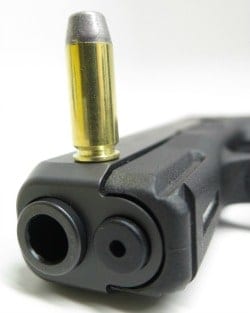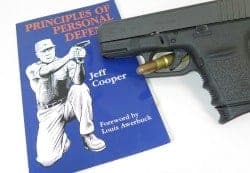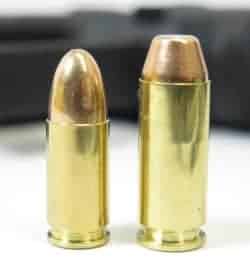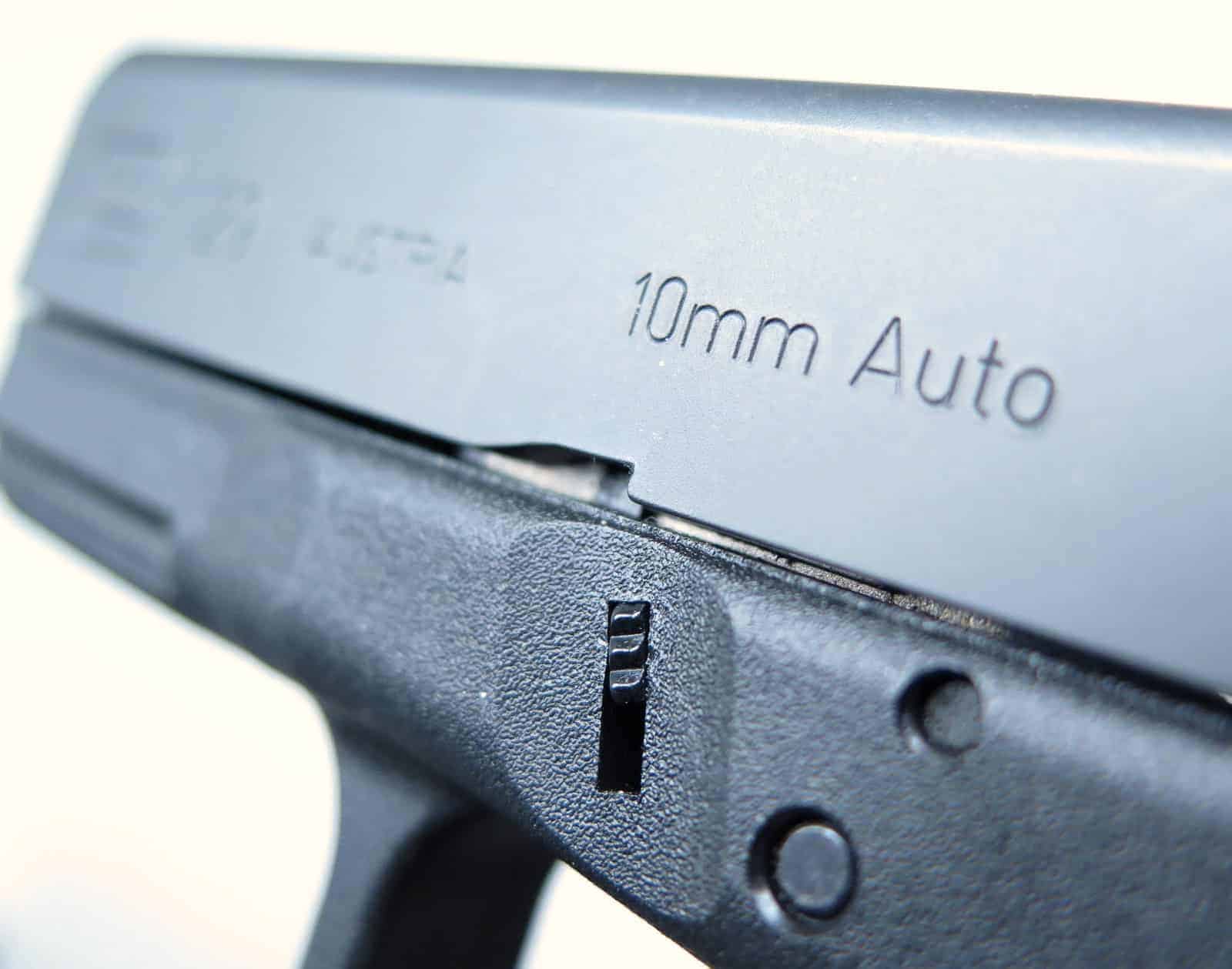The 10mm auto is a fine cartridge that was created as a very real solution to a very real problem. Unfortunately, the 10mm performed exactly as designed while predictable humans went and messed it all up.
But before we start, if you are quite familiar with the 10mm auto – and perhaps even happily own one – you likely live in Montana, Wyoming, Idaho, Alaska or Texas. According to a contact at Smith & Wesson, the vast majority of 10s are sold in those states and thusly the vast majority of appreciation for the 10mm is found there. By the way, if you add up the entire populations of MT, WY, ID and AK, it is still less than one-sixth that of Texas.
SKIP AHEAD
Other Handgun Cartridges
Revolvers these days seem to jump from .22 to .357 without so much as changing shelves in the gun store. And then they go up from there to .41, .44 Mag, and onto the wrist-snapping .454, .460, .480, and a choice of .500s.
While pistol cartridges, on the other hand, look like a bunch of inbreeds sharing the same clothes and bald heads. In fact, it can be comical debating the differences between the .380 through the .40 like little kids acting tough in the sandbox.
The .45 struts around like the big man on campus, but it’s actually just an old guy driving a sportscar. And then there is the 10mm looking like the giant blond Russian villain in a Bond movie. A huge side of beef that can throw a man across the room.
You’re The Man
Jeff Cooper was instrumental in the design of the 10mm and as a .45 fanatic, Cooper’s standards, while socially abrasive, were high, and the 10mm reflects that quest for handgun perfection (yes, that’s a not-so-subtle nod to Glock).
Stopping Power
The original 10mm produced over 600 pounds of energy by firing a 170 grain jacketed hollow point at 1300 feet per second. For reference, a Buffalo Bore +P+ 9mm can generate about 500 ft-lbs of energy with a 115 grain bullet at 1400 fps (if your gun can handle it), while regular 9mm loads often carry less than 300 ft-lbs of energy.
Related: The Art of the Rifle by Jeff Cooper
But for further reference, stuff some Buffalo Bore 155 grain into your 10mm and you can easily get 774 ft-lbs of energy. Even the 220 grain hard-cast bullet bear loads I use in my 10mm scream along at 1200 feet per second and still exceed 700 ft-lbs of energy. And that’s out of a gun not much bigger than my subcompact Glock 26!
Related: The Katrina Pistol
To handle a real 10mm cartridge (not that watered down FBI stuff) a new gun was needed and the Bren Ten was born. Unfortunately health problems prevented the Bren Ten from reaching puberty, heck it didn’t even reach kindergarten before going bankrupt, but in it’s short life it did become a meme for Miami cops just like the 24-hour five-O’clock shadow.
However, the genie of autopistol power was out of the bottle. On a side note, the actual Bren Ten used on the Miami Vice TV show shot .45 blanks and was heavily chromed to show up better in low light scenes.
Felt Recoil
The generally accepted demise of the 10mm’s popularity is from a recoil level that is certainly more than the 9mm that many LEOs were qualifying with. The FBI was all hot and heavy for the 10mm when it arrived on the scene, and it is easy to imagine why the serious government shooters would be excited about what the 10mm offered.
But for the vast majority of special agents and desk jockeys who draw down on paper as rarely as possible, the 10mm felt like Dirty Harry’s hand cannon. And don’t get them started on follow-up shots.
Pistol Reliability Problems
There was also another issue at work to shove the FBI in the direction of the .40 S&W and that was flat-out pistol durability. The 10mm is a much hotter load and all that bang takes it’s toll on hardware. Machining and metallurgy at the time was about as good as the music from the 1980s. But there were some winners in that decade with Guns N Roses and Glock among them.
Unfortunately Smith & Wesson was not one of them. Smith produced a pistol named the 1076 and nicknamed the “FBI Pistol” after the bureau placed an order for 10,000 of them. But it only took 2400 of the pistols to arrive before the FBI canceled the order and moved on.
Tap Twice, They’re Small
The initial attempts to dilute the 10mm cartridge into something you could drink all day long punched a hole in the auto-cartridge lineup. And the .40 S&W stepped in and saved the day. Or so we thought. Today, the difference between a 9mm and a .40 is minor in the big picture, but the difference between a 10mm and everything less than a 10mm is significant.
Not only does the 10mm punch much harder, but it also carries that energy far down range. So much so that a real 10mm (not that wimpy FBI stuff in the white box) has more umph at 100 yards than a .45 has at the muzzle (muzzle energy).
Even more, if you walked into a bar, the 10mm would be drinking beer with the .357/.44 magnum crowd rather than with the parabellum and its friends sipping cocktails. In fact, the 10mm routinely beats the .357 in arm wrestling, and often ties with the .41 Mag.
Is That Real?
If you saw a foot-and-a-half long auto pistol with a bore big enough to plug with your finger sitting in the display case at the gun store, you’d probably think it was a fake handgun, or at least a one-off custom job. And it’s true that autopistol designs present very real limits on cartridge size and design, but that’s no reason to throw out a perfectly good caliber just because the Feds found it a little too snappy for their manicured hands.
Related: Project Squirrel Gun
Versatile Rimless Cartridge
The two things the 10mm has over the smaller rimless cartridges is a longer case and a bigger bullet. The larger case holds enough powder to launch 200 grains of lead over 1200 feet per second, and light rounds at over 2400 FPS! That’s rifle territory.
So with the right driver behind the wheel, er I mean slide, the 10mm is a serious deer hunting round coming out the chute of an auto-pistol that some choose to carry inside their waistband.
Power Loads
For decades, the .357 was the minimum gun in black bear country and the .44 Mag at the bottom of the list for trespassing on grizzly land, especially in Alaska where everything really is bigger. So when you reduce bullets to numbers, the 10mm puts some outstanding points on the board. Delivering over 600 foot pounds of energy was Cooper’s goal for his super cartridge.
You can always downshift the powder load or bullet weight for lesser tasks, but you cannot put more power where it won’t fit. History recorded that the 10mm was uncomfortable to shoot by the average G-men and G-women. So while the 10s were being emasculated leading to the so-called “FBI Load,” the .40 S&W jumped in bed with the Fibs.
10mm Auto Didn’t Go Away
Before we knew it, the 10mm auto was a footnote and if it wasn’t for a rabid constituency of 10-lovers, it would have died. Luckily Colt Firearms was one of those 10-lovers and produced the Delta Elite in 1987. The Delta Elite was a 1911-esque design that surely pleased Jeff Cooper who probably appreciated the 1911 in .45 more than Browning himself.
Colt to the Rescue, A Little Firearms History
The Colt Delta Elite is considered the first successful 10mm pistol, but slow sales stopped production in 1996. Then at the 2008 SHOT Show, Colt announced the Delta Elite in 10mm would return. Overlapping the Colt timeline, Glock produced its first 10mm in 1990, a large frame named the Glock 20. But in a twist of fate, the Glock 22 (.40 S&W) was released first because the FBI flip-flop from 10mm to .40 S&W, thus back burner-ing the 20 for a few months.
Six years later in 1996, the subcompact 10mm named the Glock 29 was released into the wild. And today there are two 29s (Gen4 and SF), along with a new long-slide MOS version named the G40. So in case you lost count, your local gun store could carry four distinct versions of Glocks in 10mm. And there are at least half-a-dozen other major manufactures producing 10mm pistols as well.
Ten is the New Ten
Today, the cult-like following of the 10mm is being replaced by the mature appreciation of the cartridge that Colonel Cooper wanted. 10mm ammo is plentiful with bullets for self-defense, big game hunting, handgun hunters, and even hard-cast bullets for the most dangerous animals in North America – including grizzly and polar bears.
It should be obvious that if your stable of survival-oriented handguns has increased beyond the traditions, then you should give serious consideration to the 10mm auto. In fact, think long and hard about the 10mm as a single solution for both defense and hunting when the World goes all ROL on you. And for the record, I think of Glocks like food storage; more is better, and I don’t get rid of the old just because I got something newer.
Related: Glock 42 Review
Wrap Up
Being essentially a .40 Magnum, the 10mm auto has changed from a choice between pain or power, into a fighting man’s cartridge that has the respectable knockdown energy and flat trajectory that lesser rounds can only dream of. So like the rattlesnake, yes it bites, but those new to the 10mm most likely just misunderstand it. And that is all about to change…again.






